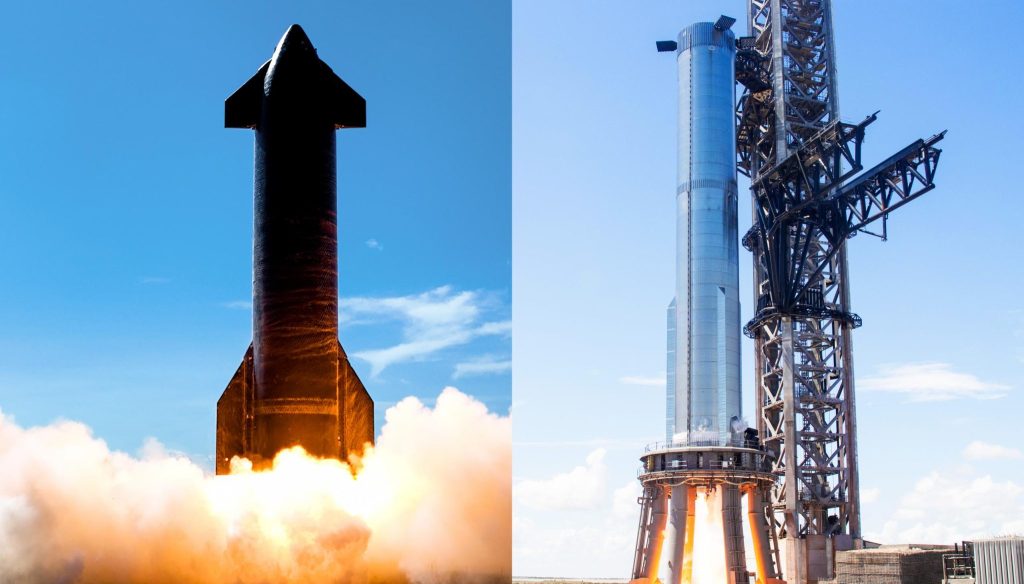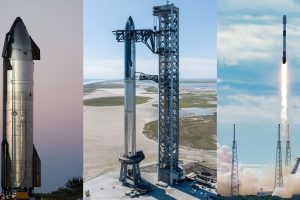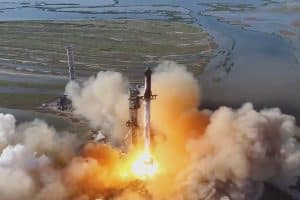CEO Elon Musk says that SpaceX’s South Texas Starship aims to build up to five of the two-stage megarockets in 2023.
SpaceX’s Boca Chica, Texas hardware endeavors began in an empty field in late 2018, kicking off Starhopper testing in 2019. In late 2019 and early 2020, the company began building the bones of the factory that exists today, relying heavily on several giant tents (“sprung structures”) similar to those used by Tesla. SpaceX has already begun the process of replacing those tents with larger, permanent buildings, but two of the original tents continue to host crucial parts of the Starship manufacturing process.
In terms of useful output, that manufacturing slowed down a bit in 2022. That slowdown can likely be partially explained by the need to move equipment and processes into the first finished section of Starfactory. But in general, SpaceX was simply focused on finishing and testing Starship S24 and Super Heavy B7 – both stages of the latest vehicle meant to attempt Starship’s first orbital launch.
Only by late 2022 did Ship 24 more or less complete proof testing, and Booster 7 is still several major tests away from solidifying full confidence in its design. SpaceX has only conducted limited testing with fully-stacked Starships, further reducing the amount of confidence the company can have in the assembled rocket. Lacking the data needed to know with certainty whether the tweaked designs of Starship and Super Heavy are good enough for several orbital test flights, it’s thus unsurprising that SpaceX only produced a handful of usable ships and boosters in 2022.

But if CEO Elon Musk’s forecast is correct, the company has plans to increase Starbase’s useful output in 2023. According to Musk, SpaceX aims to build “about five full stacks” this year, translating to five flightworthy Starships and five Super Heavy boosters.
In 2022, SpaceX finished Booster 7 and built Booster 8, Booster 9, and most of Booster 10. Booster 8 was almost immediately relegated to the retirement yard. Booster 9, featuring some significant design changes, completed a limited amount of proof testing and returned to the factory in early January – likely for Raptor engine installation. The fate of Booster 10 is unclear, but it stands as a prime example of how fast SpaceX can actually build massive Starship hardware when conditions are right. SpaceX began stacking B10 in late October 2022 and the vehicle is just two stacks away from full height three months later.
In the same period, SpaceX finished and immediately retired Starship S22, finished and began testing Ship 24, finished and began testing Ship 25, and finished stacking Ship 26. Booster 9’s upgrades partially insulate it from the most disappointing possible scenario, retirement before flight. Even if Booster 7 fails during prelaunch testing or its launch attempt, revealing major design flaws, it’s possible that Booster 9’s changes have already addressed those weaknesses, allowing it to continue the flight test campaign. Ship 25’s fate is even more dependent on the fate of Ship 24.
In 2022, SpaceX ultimately produced two “full stacks,” with a third (S26/B10) likely to be completed – albeit with a less certain fate – in early 2023. Delivering five full stacks this year – meaning five ships and five boosters that make it far enough to be paired with another and fully stacked – would be a major improvement. However, as was the case in 2022, higher-volume production will remain a risky proposition until the designs of the vehicles being built have been fully qualified.
Given how long it’s taken SpaceX to partially qualify Super Heavy Booster 7, it appears that the largest source of uncertainty will remain for at least another month or two, if not well into mid-2023. Starship production has many uncertainties of its own, and all of them are complicated by not knowing if a Super Heavy booster will be available to launch each new ship in a timely fashion.

Ultimately, an entirely different constraint means that “five full stacks” may be all SpaceX needs to build for the next 12+ months. After a long and painful process, the FAA completed an environmental review of SpaceX’s Starbase, Texas facilities, permitting a maximum of five orbital (full-stack) Starship launches per year. Starship’s FAA orbital launch license, which has yet to be granted, could be even more restrictive. A second Starship pad under construction in Florida is unlikely to be cleared for orbital launches until Starship has proven itself to be moderately safe in South Texas, which could easily take 12-18 months, if not longer.
Combined with the fact that no super-heavy-lift rocket in history has flown five times in its first year of launch activity, a trend Starship seems unlikely to break, SpaceX could practically halt production entirely in 2023 and still have a full year of testing ahead of it while only using Ships 24-26 and Boosters 7, 9, and 10. Unintuitively, that bodes well for a busy 2023 of Starship test flights, as much of the hardware required for three flight tests is already close to completion or almost ready to begin preflight testing.





